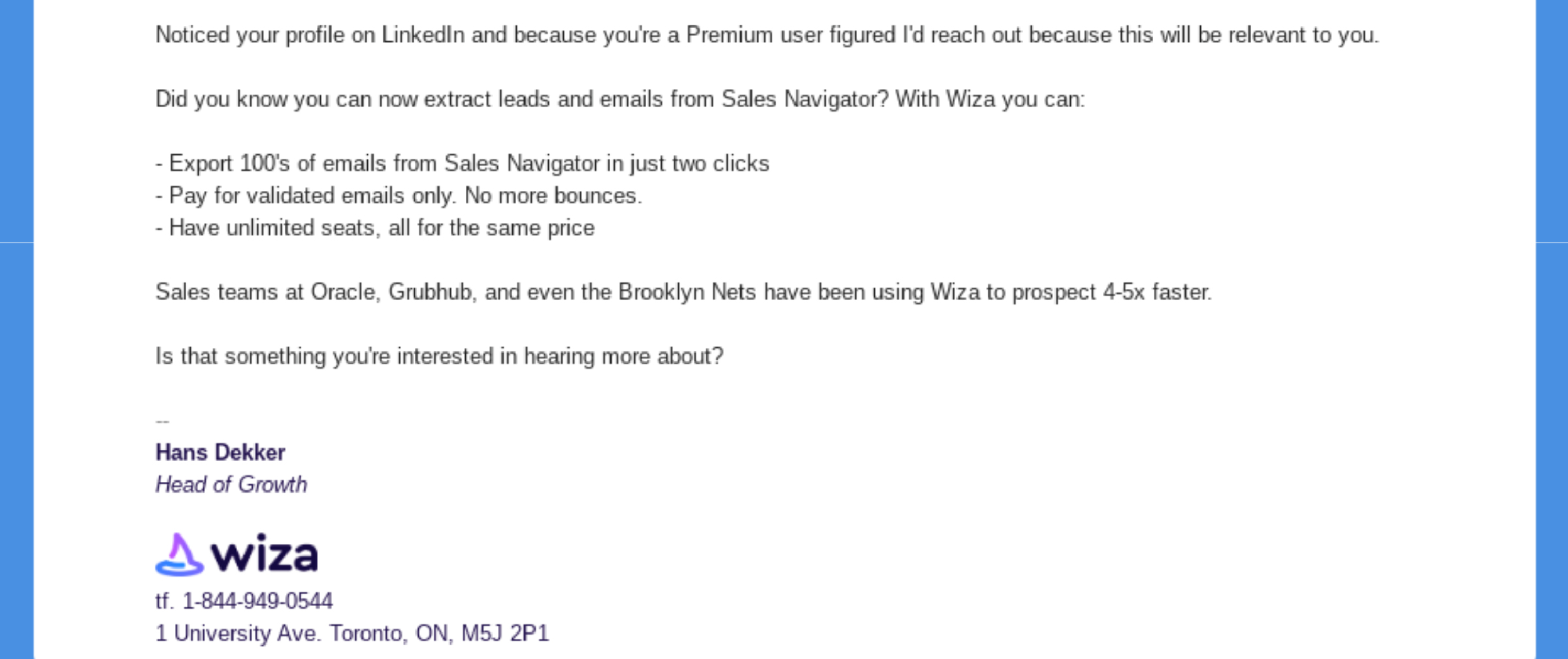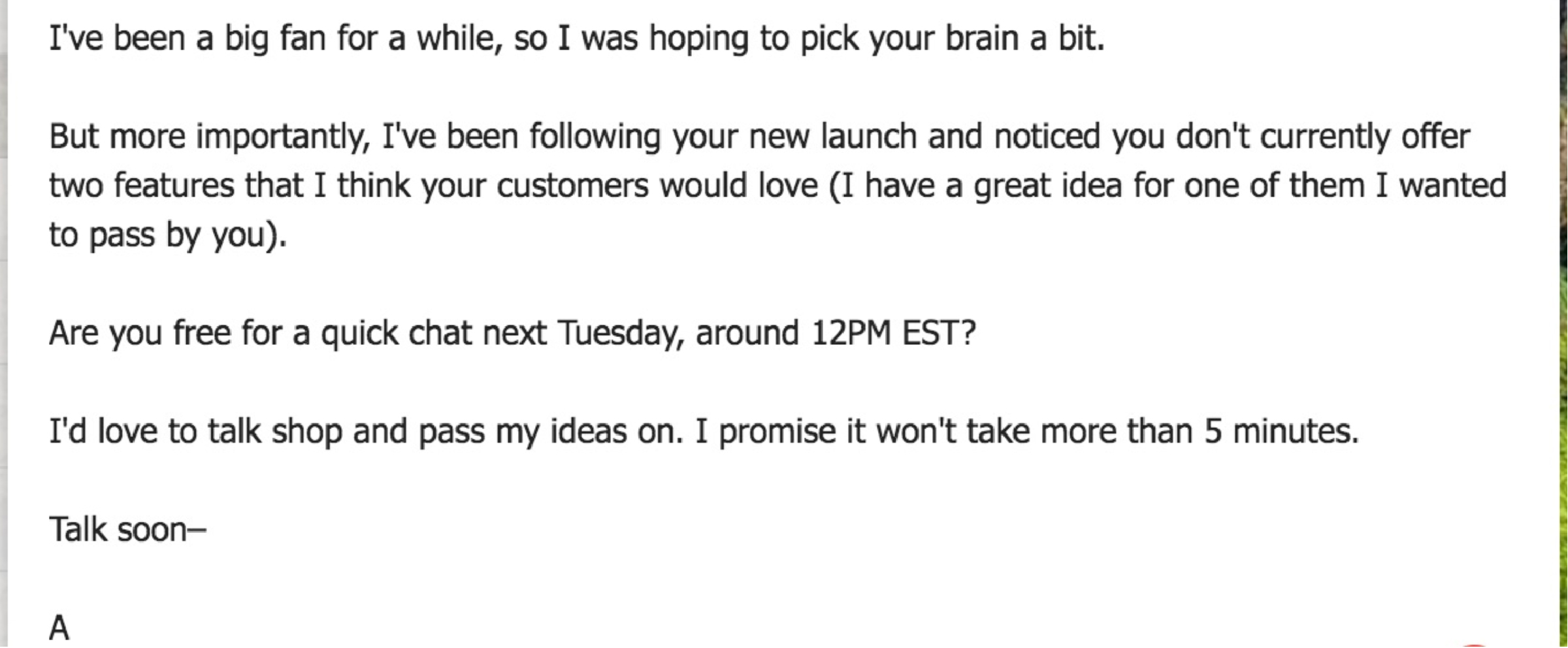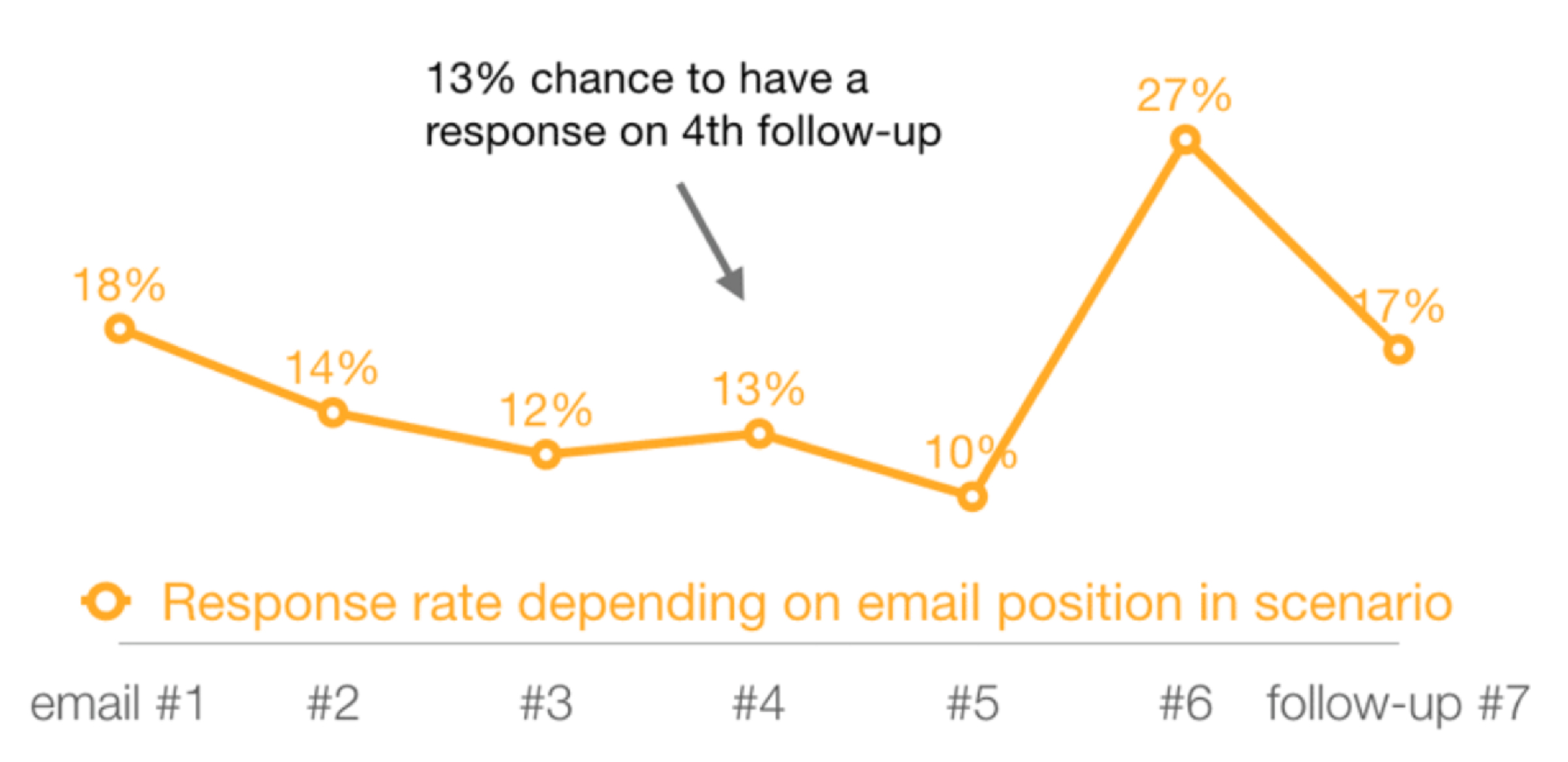Cold emails are still one of the most effective ways to reach your target customers.
You can personalize the emails to their interests and needs and use the connection to start building a relationship. While it can be daunting reaching out cold to prospects, it doesn’t have to be scary.
In fact, cold emailing can be fun and successful if you do it right.
The key is to create a campaign that uncovers contact details, serves the perfect copy with just the right amount of persuasion, and opens up a discussion.
Here is our guide to creating and implementing the perfect cold email campaign.
1. Source Target Email Addresses
The first step is creating a list of target prospects you want to reach out to.
At this point, you probably have a couple of customer personas at hand – use these to research potential buyers and start making a list of companies you want to connect with.
Next, you need to identify who the best person to contact is at these companies and find their email addresses. Your best bet is to use a tool like SalesIntel, which has more than five million human-verified contacts in its database.
This will ensure you’re reaching the right person and that your email lands directly in their inbox, not a generic info@ inbox.
2. Create the Perfect Cold Email Copy
Once you’ve got a substantial list of contacts to reach out to as well as their individual email addresses, it’s time to focus on the email itself.
This part is incredibly important. Get it wrong, and your emails might end up in the dreaded Spam folder. But get it right, and you could have a ton of new customers on your hands in no time at all.
So what makes the perfect cold email copy?
There are several things to bear in mind before you start putting fingers to keyboard.
We’ve boiled it down to the essentials here:
Keep It Short
Remember, your recipients are likely busy people with lots going on. If they open your email and see a long ream of text, there’s a high chance they’re going to delete it and move on.
This is why keeping your cold emails short, sweet, and to the point is absolutely vital. A couple of paragraphs is enough to get your message across without overwhelming the person at the other end.
Make it About Them
We’ve all received cold emails that go on and on about the sender, like who they are, what they do, and what they enjoy in their spare time.
The thing is, your recipients don’t care about you at this point. For starters, they have no idea who you are, so going on and on about your likes and dislikes is a surefire way to end up in their Spam folder.
Instead, make the email about them.
You can do this by:
- Asking questions
- Writing a statement that shows you understand their business and their needs
- Focusing on how you can help them
- Providing value
If you do this, the recipient will feel like you understand them and have their best interests at heart. They can also quickly get a feel for if you can help them or not.
Personalize Your Emails
Instead of cutting and pasting a generic email to every contact in your list, try tweaking each one so it’s personalized in some way.
This doesn’t mean you have to write a brand new cold email from scratch for every new recipient. Rather, tweak a sentence here and there to include their company name or a specific pain point you’ve identified that they have.
This will make them feel special and not like they’re just a number in a mass cold email campaign.
End With a Call-to-Action
At the end of your email, you should show recipients what to do next.
If you want them to book a demo, ask them!
If you want them to reply to your email and answer a question you’ve posed, invite them to do that. Ending your email with a strong CTA will exponentially increase the number of responses you get.
3. Write a Compelling Subject Line
Now you’ve got your email ready to go, it’s time to work on the subject line.
This is where a lot of people fall short. Instead of writing out the first thing that comes to mind, spend time working on your subject line. After all, it’s the first thing your recipients will see. If it’s not compelling enough, they might never open your email and your lovingly crafted message won’t ever be seen.
Your subject line should do the following things:
- Tell recipients what they can expect when they open your email
- Get to the point – be clear and concise
- Speak directly to the recipient if possible – personalization by name is key here
- Touch on the recipients’ pain point
Ideally, your subject line should invoke a sense of curiosity and encourage the recipient to click in to find out more.
4. Follow Up
Your follow-up game needs to be strong in a cold email campaign.
This is because the majority of initial emails you send won’t get a response. That doesn’t mean the recipient isn’t interested though. They might have been busy at the time and meant to respond later but forgot. All sorts of things crop up, which is why following up is so important.
It can actually take up to seven follow-ups before a prospect responds, with the chance of a reply increasing on the sixth and seventh follow-up.
Your follow-up emails don’t need to be lengthy. Simply remind recipients about your first email, recap on the value you can offer them, and add in another CTA to encourage their response.
Bring in Leads With Cold Emails
Creating a cold email campaign doesn’t need to be daunting. In fact, as you can see here, there are just a few simple steps in the process.
- Start by collecting the individual email addresses of your contacts
- Craft compelling sales emails
- Write subject lines that invoke curiosity
Do this, and you’ll have a campaign set up in no time at all that seamlessly brings in leads and nurtures prospects towards the sale.
Scott Miraglia
Scott is the CEO of Elevation Marketing. He is a balanced risk-taker with nearly three decades of experience starting and growing advertising and marketing agencies. His business acumen is matched with a drive to build creative teams that thrive in open, collaborative work environments. Scott seeks out the best creative individuals, not only to provide quality service to clients, but to also help shape the future direction of Elevation Marketing. He remains dedicated to helping his talented teams develop unique and effective integrated marketing programs that help employees realize their full potential while serving up impressive business wins for clients.








